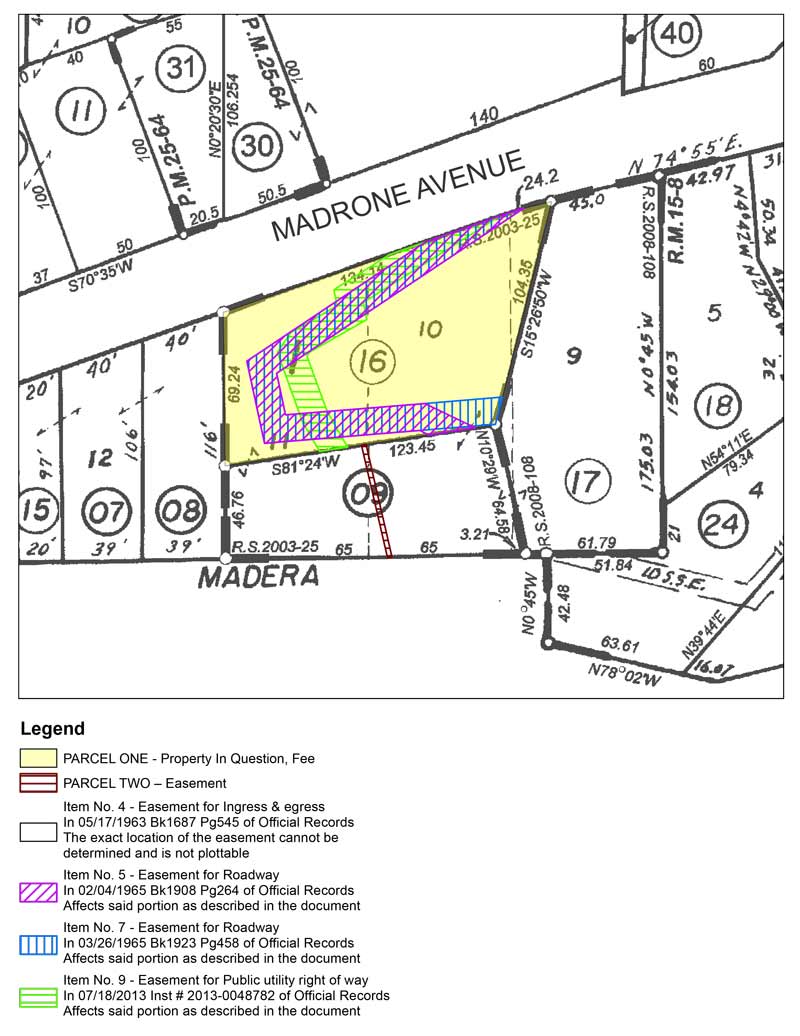When you buy or sell a property, you may have to understand the easements on the property and how they affect your ownership. Easements have an effect on the title to a property.
What are Easements?
An easement on a property gives an adjacent property, individuals, a business like a utility company, or a town the right to use part of your property. An easement can also restrict the use of your property by others. For example, a neighbor may have a landscape easement on a piece of your property (often a corner that you don’t see or cannot access easily) with permission to install and maintain plants. This landscaping benefits the neighbor. However, this easement usually restricts the neighbor from building a permanent structure on the easement or significantly affecting your use of your property.
Easements are very common, and almost every property has one or more easements. An easement benefits a neighbor’s property or another person, also known as the “dominant tenement.” The property owner agreeing to an easement is known as the “servient tenement.”
Easements can affect property values positively, negatively, or not at all. That’s why it is important to know about them.
Example of Easements
Here is an example of easements on a property in Larkspur:

This older property in Marin created ca. 1899 has four recorded easements. The first, item 4, is not mapped here, probably due to the illegible document that describes the easement. However, we know that this easement was for Ingress and Egress (right to travel to and from a property over the lands of another) and provided access to lots 09 ad 17. Items 5 and 7 are easements for an 8-foot-wide driveway, later changed to a 12-foot driveway. The easement for public utilities (item 9) provides for a natural gas line to lot 09. This detailed map was provided by Fidelity National Title Co.
How Easements are Created
The common way to create an easement is for both parties to sign a document that contains the legal description of the land in an easement, its use and limits of use, and any conditions of the easement. These documents are usually recorded by the Marin County Recorder and indicate that an easement is appurtenant to a property, meaning it stays with the property until rescinded by both parties or by meeting conditions described in the original easement. Here are the common ways that easements are created:
- Recorded map easements. When land is subdivided to create a neighborhood, easement are often shown on the recorded subdivision map; for example, utility easements or common use areas.
- Express easements or easement grants. These are written contracts between neighbors agreeing to an easement. These easements are often purchased and are recoded in the county records.
- Prescriptive easements. These easements are acquired by regular use over five years. In California, a user of land may establish a prescriptive easement by proving that their use of another’s land was: (1) continuous and uninterrupted (maybe not every day but regularly) for five years; (2) open and notorious (i.e., not hidden; meaning anyone who looks can see the use); and (3) hostile (used without the permission of the property owner).
There may be other unusual ways to create easements; for example, Implied Easements and Easements by Necessity.
Types of Easements
California Civil Code 801 provides a list of circumstances that may become easements. Some of these are irrelevant to life in Marin; for example, the right of taking game. Here are some of the easements that you will see for Marin properties:
Utility/Anchor. This allows a utility company to install utility lines (gas, water, electric, sewer) across your property and to maintain these lines. An anchor easement allows a utility company to place equipment on your property; for example, a wire stabilizing a pole.
Private sewer line or drainage. Allows a neighboring property to install an sewer line across your property; or install a drain line that connects to a city storm drain system or creek.
Egress and Ingress. This includes a driveway or walking path across your property that allows neighbors to reach their properties.
Parking. This provides parking for the use of an adjacent property.
Landscaping. This gives permission to plant and maintain landscaping on a portion of your property.
Recreation. This easement allows recreational use on part of a property.
Open Space. This easement restricts development on a specified portion of land to preserve its natural environment.
Conservation. A conservation easement is a voluntary agreement with a nonprofit land trust or government agency that allows a landowner to limit the type or amount of development on their property while retaining private ownership of the land. In Marin, the Marin Agricultural Land Trust (MALT) has used conservation easements to prevent development on more than 54,000 acres of productive farm land in West Marin.
Solar. This easement establishes the “right of receiving sunlight across real property of another for any solar energy system.” This restricts a neighboring property from blocking sunlight to a solar energy system used to create thermal or electric energy.
Duration of Easements
Most easements stay with a property as it is transferred to new owners. This type of easement is “appurtenant” to the property.
An easement can also be a personal right to use the land of another person (an easement in gross) and does not remain with the property. If the parties to the easement die or sell the property this easement becomes void. An example, is the right to fish in a pond belonging to another. Utility easements may also be easements in gross.
A Note of Caution
There are many different kinds of easements defined by laws and legal precedents. Some are are easy to understand and others complicated. If you are buying or selling a property, you can avoid difficulties by first asking your Realtor. If the property is for sale, the designated title company may also explain the easements. For complex cases, consult a local real estate attorney.


